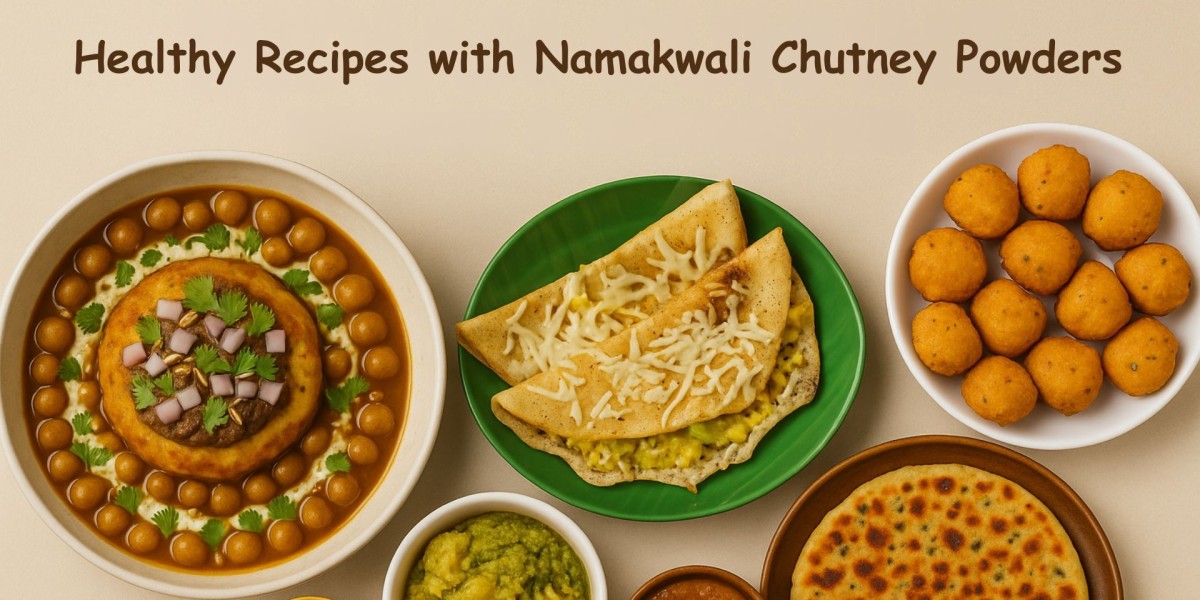Chutney powder, also known as "podi" in South India, is a flavorful, dry condiment that has been an integral part of Indian cuisine for generations. It is a delightful blend of roasted spices, lentils, herbs, and sometimes nuts or seeds, all ground to perfection to create a fine or coarse powder. This versatile condiment not only enhances the flavor of food but also carries with it the essence of regional culinary traditions, homemade authenticity, and nutritional richness.
At its core, chutney powder is more than just a seasoning—it’s a celebration of India’s diverse food culture. Every region, every household has its own version of podi. From the nutty peanut chutney powder of Maharashtra to the spicy karuveppilai (curry leaf) podi of Tamil Nadu, and the bold gunpowder (molaga podi) from Andhra Pradesh, each variety tells a story of local ingredients, customs, and tastes.
Ingredients that Make a Difference
The beauty of chutney powder lies in its simplicity and balance. While ingredients vary based on region and recipe, the foundation typically includes:
Roasted lentils: Urad dal (black gram) and chana dal (Bengal gram) are commonly used for their earthy flavor and crunchy texture.
Red chilies: These provide the essential heat, with variations in type and quantity depending on the desired spice level.
Curry leaves: Dried and roasted, these leaves add an unmistakable aroma and are packed with iron and antioxidants.
Tamarind or dry mango powder: For tanginess and depth of flavor.
Garlic or asafoetida (hing): Added for their pungency and digestive benefits.
Coconut: Often used in Kerala or Karnataka-style chutney powders to bring richness and sweetness.
Nuts and seeds: Peanuts, sesame seeds, or flaxseeds boost flavor and nutrition.
Once the ingredients are carefully roasted to bring out their natural oils and fragrance, they are ground to a fine or slightly coarse texture. This not only intensifies the flavor but also extends shelf life by reducing moisture content.
Versatile, Convenient, and Delicious
Chutney powder is a true multitasker in the kitchen. Traditionally enjoyed with steamed idlis, dosas, or rice, it’s often mixed with ghee, sesame oil, or coconut oil to create a rich, spreadable paste. It can be:
Sprinkled over hot rice with a drizzle of ghee for an instant comfort meal.
Used as a seasoning for stir-fried vegetables or roasted snacks.
Mixed into batters or dough to enhance flavor in pakoras, parathas, or bread.
Served as a side dish with curd rice or upma.
Its long shelf life, especially when stored in an airtight container, makes it a favorite among busy households and travelers alike. It’s the perfect pantry staple—always ready to transform a simple meal into something special.
Nutritional Benefits
Far from being just a flavorful side, chutney powder is packed with nutrition. The use of lentils and seeds provides protein, fiber, and essential amino acids, making it a wholesome addition to vegetarian and vegan diets. Red chilies are rich in vitamin C and capsaicin, which have metabolism-boosting properties.
Curry leaves and garlic contribute antioxidants, anti-inflammatory properties, and help aid digestion. When made with flaxseeds or sesame seeds, chutney powder also becomes a source of omega-3 fatty acids, iron, and calcium.
Unlike store-bought sauces or condiments filled with preservatives and added sugars, a homemade or traditionally prepared chutney powder is often preservative-free, gluten-free, and crafted with clean, whole ingredients.
A Cultural Treasure in Every Spoonful
The making of chutney powder is often a ritual passed down through generations. Grandmothers would roast spices in iron pans, pound them in stone grinders, and carefully store the aromatic powder in glass jars lined with banana leaves or cloth. Even today, many families continue this tradition, taking pride in the flavors that define their heritage.
In South Indian homes, podi is not just a condiment—it’s a symbol of hospitality and love. Offering podi with ghee and rice is a simple, yet heartwarming gesture that signifies comfort and home.
Artisanal and Homemade Varieties
As demand for traditional and natural foods grows, small-batch, artisanal chutney powders are gaining popularity. These are often handcrafted using organic ingredients, cold-roasting methods, and traditional recipes, ensuring authentic taste and maximum health benefits.
Variants include:
Moringa Leaf Podi: Packed with iron and antioxidants.
Flaxseed Podi: Great for heart health and hormonal balance.
Dry Coconut Chutney Powder: Mild and kid-friendly.
Garlic Podi: Bold, punchy flavor with medicinal benefits.
These powders are not only delicious but also cater to modern health-conscious consumers looking for superfoods in traditional formats.
Conclusion: A Must-Have Kitchen Essential
Chutney powder is a timeless favorite—nutritious, flavorful, and deeply rooted in Indian culinary tradition. Whether you’re looking for a spicy kick, a comforting taste of home, or a health boost, a spoonful of this magical powder can do it all.
Stock your pantry with this versatile condiment, and discover how easily it elevates everyday meals. Whether homemade or sourced from trusted local brands, chutney powder is the ultimate expression of flavor meeting function.







